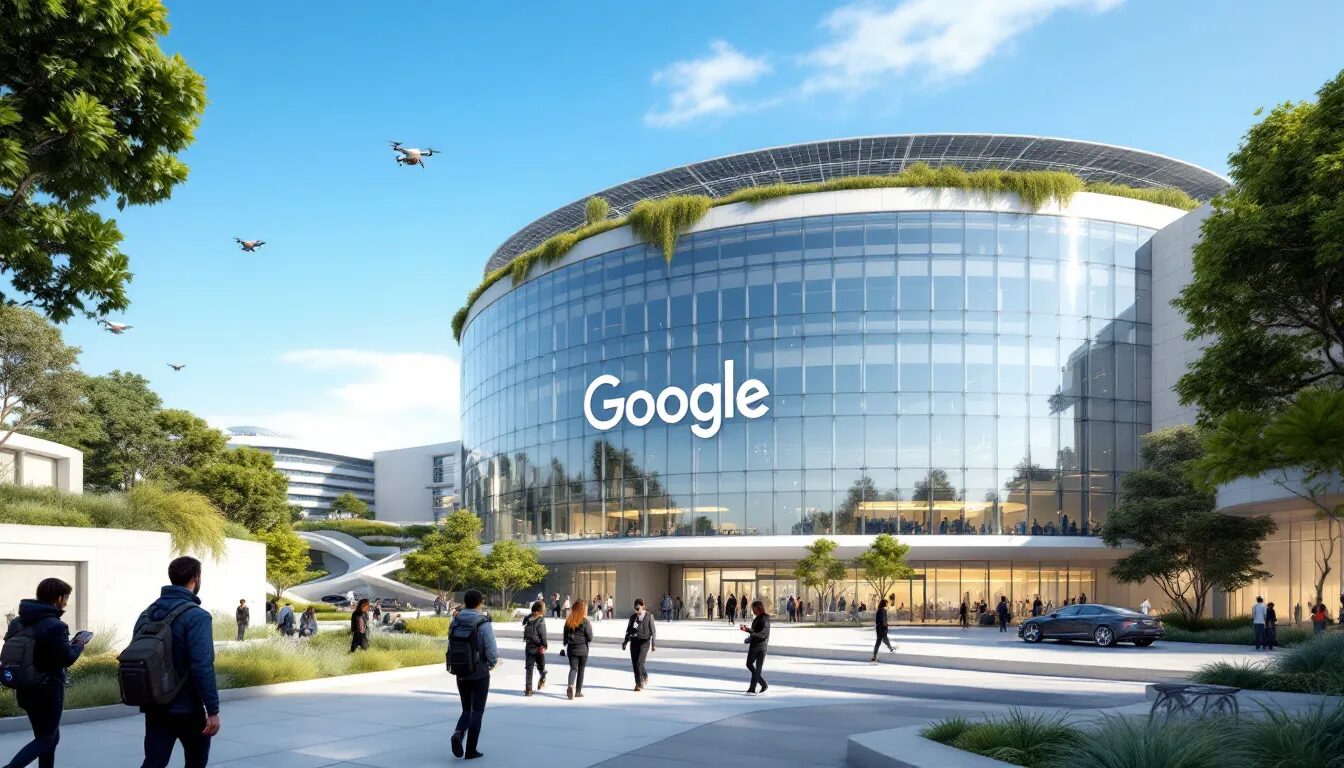From zero visibility to top of search—here’s how creators, brands, and entrepreneurs can dominate Google organically this year.
Ranking #1 on Google is no longer a mystery reserved for SEO experts. It’s a combination of strategy, consistency, and smart positioning. In 2025, with AI search results, video integration, and rising competition, the stakes are higher than ever—but so are the rewards.
If you want to build lasting visibility, become the go-to name in your niche, and earn traffic that converts on autopilot, this guide is for you. No paid ads. No shady backlinks. Just high-performance SEO built for today’s web.

Why Ranking #1 on Google Still Matters
- Trust: Users still trust Google’s top results over paid ads
- Traffic: The first organic result gets over 27% of all clicks
- Longevity: Unlike ads, organic results keep delivering year after year
- Authority: Google-first visibility makes you “Googleable” — critical for branding and PR
- Passive Discovery: Clients, media, and partners find you without outreach
Appearing on the first page of search results is crucial as it significantly increases the chances of being seen and clicked by users.
If your name or business doesn’t show up when people search your category, you’re invisible to the world.
Step 1: Identify the Right Keyword Opportunities
Don’t chase high-volume, high-competition keywords like “marketing” or “SEO.” Go for intent-driven long-tail keywords — phrases people actually use when they want something specific. Google’s algorithm uses various ranking factors to determine the relevance and quality of content, ensuring that the most appropriate and high-quality pages meet users’ needs.
Use tools like:
- Google Keyword Planner
- Ubersuggest
- SurferSEO (as you’ve done)
- AnswerThePublic
Look for:
- Keywords with 100–10,000 monthly searches
- Low-to-medium competition
- Buyer or action intent (e.g., “how to get featured in Forbes,” “best PR agency for creators,” “artist press kit examples”)
These are the keywords that convert, not just attract traffic.
Step 2: Create the Best Content on the Internet for That Keyword
Here’s the secret: Google ranks what deserves to rank.
Your content must be:
- Incredibly helpful — solve the searcher’s problem completely
- Well-structured — use headings (H1–H3), short paragraphs, bullets
- Readable — 6th–8th grade level is ideal
- Optimized — include keyword in title, URL, headers, intro, and image alt text
- Long enough — ideally 1,500–2,500 words for pillar posts
- Multimedia-rich — use images, video embeds, and internal/external links
Ensure that the keywords used in your content match what users are searching for to improve ranking in search results.
Use SurferSEO’s content planner to get exact guidelines per keyword. And always ask: Is this better than what’s already ranking?
Step 3: Build Topical Authority in Your Niche
Google favors websites, not just pages. The more you write about a topic, the more Google sees you as a source of authority.
Creating unique content that resonates with readers, particularly when addressing specific topics, is crucial. Content demonstrating personal experiences and expertise can enhance engagement and improve SEO rankings, especially for niche subjects where personal narratives add significant value.
So instead of publishing random articles, build content clusters:
- Core Topic: “How to grow your brand”
- Sub-articles: “Best tools for branding in 2025,” “How to write a brand story,” “How to use PR to grow visibility,” “Instagram branding hacks”
Link these posts together using internal links to create SEO depth. Google’s crawlers will index your site as an expert source.
Step 4: Optimize Your On-Page SEO

Basic but non-negotiable:
- Title tag: Use the exact keyword near the beginning
- Meta description: Summarize with curiosity or value promise
- URL structure: Keep it short and clean (e.g., /how-to-rank-1-google/)
- H1 tag: Only one per page, with keyword
- H2s and H3s: Break up content for readability and crawling
- Image alt text: Describe each image and include keywords where relevant
- Skimmable content: Make your content easily digestible to enhance its chances of being used by Google for features like meta descriptions. When content is skimmable, it increases the likelihood that Google will extract relevant information for answer-driven results, ultimately helping to improve search rankings.
Bonus: Use schema markup (via plugins like Rank Math or Yoast) to add rich snippets like FAQs or reviews, which help win Featured Snippets.
Step 5: Earn High-Quality Backlinks (Without Spam)
Google still uses backlinks as a key ranking signal. The more quality sites that link to you, the more Google trusts your content. Backlinks serve as a pivotal ranking factor that helps boost a site’s position in search results.
Best ways to earn backlinks in 2025:
- Get featured in media — PR features in Forbes, Elle, or Rolling Stone often include links to your site
- Write guest posts on related blogs or business sites
- Use Help a Reporter Out (HARO) to get quoted
- Create linkable assets like industry reports, data studies, or infographics
- Run joint campaigns with influencers or collaborators
Bad backlinks (from spam directories or irrelevant sites) can hurt you. Focus on quality, not volume.
Step 6: Build a Fast, Mobile-Friendly, Secure Website
Technical SEO is real.
Your site must be:
- Fast — Aim for under 3 seconds load time
- Mobile-optimized — 60%+ of traffic is mobile
- HTTPS-secured — Non-SSL sites are penalized
- Clean and crawlable — No dead links, broken code, or excessive plugins
Previously, Google utilized desktop versions for indexing, but now it prioritizes mobile versions of websites, highlighting the importance of mobile-friendliness.
Use Google PageSpeed Insights and Google Search Console to monitor performance.
If your content is great but your site sucks, you won’t rank.
Step 7: Update and Refresh Old Content
Google rewards freshness. Content freshness significantly impacts the relevance and visibility of webpages in search engine results. Go back to your old posts every 6–12 months and:
- Update statistics and facts
- Improve headlines and intros
- Add new internal links
- Embed new media or quotes
- Expand sections that underperform
This boosts rankings and keeps your content evergreen.
Step 8: Add Video and YouTube SEO
Google owns YouTube. Which means embedding video improves SEO. Even better? Create short YouTube videos that target the same keyword as your blog.
Example:
- Blog post: “How to get featured in Forbes”
- Video: “3 Real Ways to Get Into Forbes Without Ads”
- Both link to each other
Video increases time-on-page and gives you a second chance to appear in Google results—this time as a video card.
Step 9: Use Internal Linking Like a Web
Every time you publish a new page, link to at least 2–3 older pages, and vice versa. This:
- Improves crawlability of your webpages and search rankings
- Passes “link juice” between pages
- Keeps users on-site longer
- Shows Google the depth of your content map
Most people forget this—and it’s one of the easiest SEO wins.
Step 10: Track and Improve With Analytics
Install:
- Google Analytics – to track users, bounce rate, and session length
- Search Console – to track impressions, click-through rate, and keywords
- Hotjar or Microsoft Clarity – to see heatmaps and where users drop off
If you’re not tracking your SEO, you’re flying blind. The goal is not just traffic—it’s traffic that converts.
Enhance User Experience and Conversion
Enhancing user experience is crucial for improving conversion rates and ranking higher on Google search results. Website owners can significantly boost user experience by optimizing their web pages for mobile-friendliness, ensuring fast page speeds, and maintaining content freshness. A well-crafted meta description can entice users to click on the search results, increasing the click-through rate and driving more traffic to the website.
Using relevant and descriptive image alt text not only improves user experience but also helps search engines understand the content of the images, contributing to better rankings. Domain authority plays a significant role in determining the ranking of a website, and creating high-quality content can help increase domain authority.
Content freshness plays a bigger role in certain types of searches, such as current news topics. Website owners should focus on creating content that is highly relevant and up-to-date. By using language models and understanding search queries, website owners can create content that matches the search terms and provides helpful information to users.
Google Drive can be a valuable tool for storing and sharing files, allowing website owners to collaborate with team members and improve content creation. By focusing on these aspects, website owners can enhance user experience, drive more traffic, and achieve higher rankings on Google.
Master Technical SEO for Better Crawling and Indexing
Technical SEO is essential for improving the crawling and indexing of web pages by search engines like Google. Website owners can use tools like Google Search Console to monitor and optimize their website’s technical SEO. Creating a sitemap and submitting it to Google can help improve the crawling and indexing of web pages.
Optimizing website structure and using header tags can also improve the organization and readability of content. Website owners should focus on creating content that is relevant and helpful to users, and use keywords strategically to improve search engine rankings. Backlinks from high-authority websites can improve the ranking of a website, and website owners should focus on creating high-quality content that attracts links from other websites.
Technical SEO requires ongoing effort and optimization. Website owners should regularly monitor and improve their website’s technical SEO to stay ahead of the competition. By mastering technical SEO, website owners can improve the visibility and ranking of their website, driving more traffic and conversion.
Leverage Local SEO and Google My Business
Local SEO is crucial for businesses that serve a specific geographic region, and Google My Business is a powerful tool for improving local search rankings. Website owners can claim and optimize their Google My Business listing to improve their visibility in local search results. Using location-specific keywords and creating content that is relevant to the local community can also improve local search rankings.
Google My Business allows businesses to post updates, respond to reviews, and provide the latest information to customers, improving user experience and driving more conversion. Website owners can use Google My Business to connect with customers and provide helpful information, improving their online reputation and driving more sales.
Local SEO requires ongoing optimization and improvement. Website owners should regularly monitor and improve their Google My Business listing to stay ahead of the competition. By leveraging local SEO and Google My Business, businesses can improve their visibility and ranking in local search results, driving more traffic and conversion.
Website owners can use tools like Google Search Console and Google Analytics to monitor and optimize their local SEO efforts, improving their online presence and driving more business.
Common SEO Mistakes to Avoid
- Writing for keywords, not people
- Keyword stuffing
- Publishing without promotion
- Ignoring technical SEO
- Not linking to authoritative external sources
- Chasing viral content with no search value
- Ignoring key ranking factors
In 2025, SEO isn’t about hacking Google—it’s about building real value on a solid foundation.
Final Thoughts
Ranking #1 on Google isn’t reserved for giant companies. If you’re a solo creator, founder, or growing brand, you can still win organic traffic—by being strategic, consistent, and clear about what you offer.
Understanding search requests is crucial for optimizing content effectively. Google algorithms evaluate webpages based on specific ranking factors to fulfill user queries, aiming to present the most relevant content in response to what users type into the search engine.
In a world of AI noise, human clarity wins. If you solve real problems, serve real audiences, and structure your content like a pro, Google will reward you.
Let the internet work for you, not against you.
VUGA Media Group is a global media powerhouse with direct access to over 1,000 of the world’s leading publications and a proprietary network of 15,000 verified journalists. We work with major brands, celebrities, influencers, producers, and businesses across every industry to craft powerful narratives and deliver guaranteed media coverage. With over 1,000 clients served worldwide, our results speak for themselves. Contact us—and let us make you famous.





